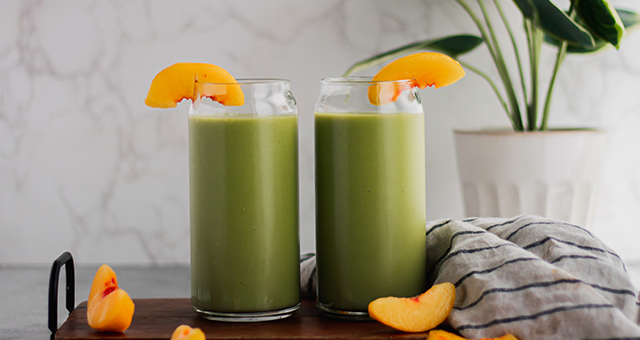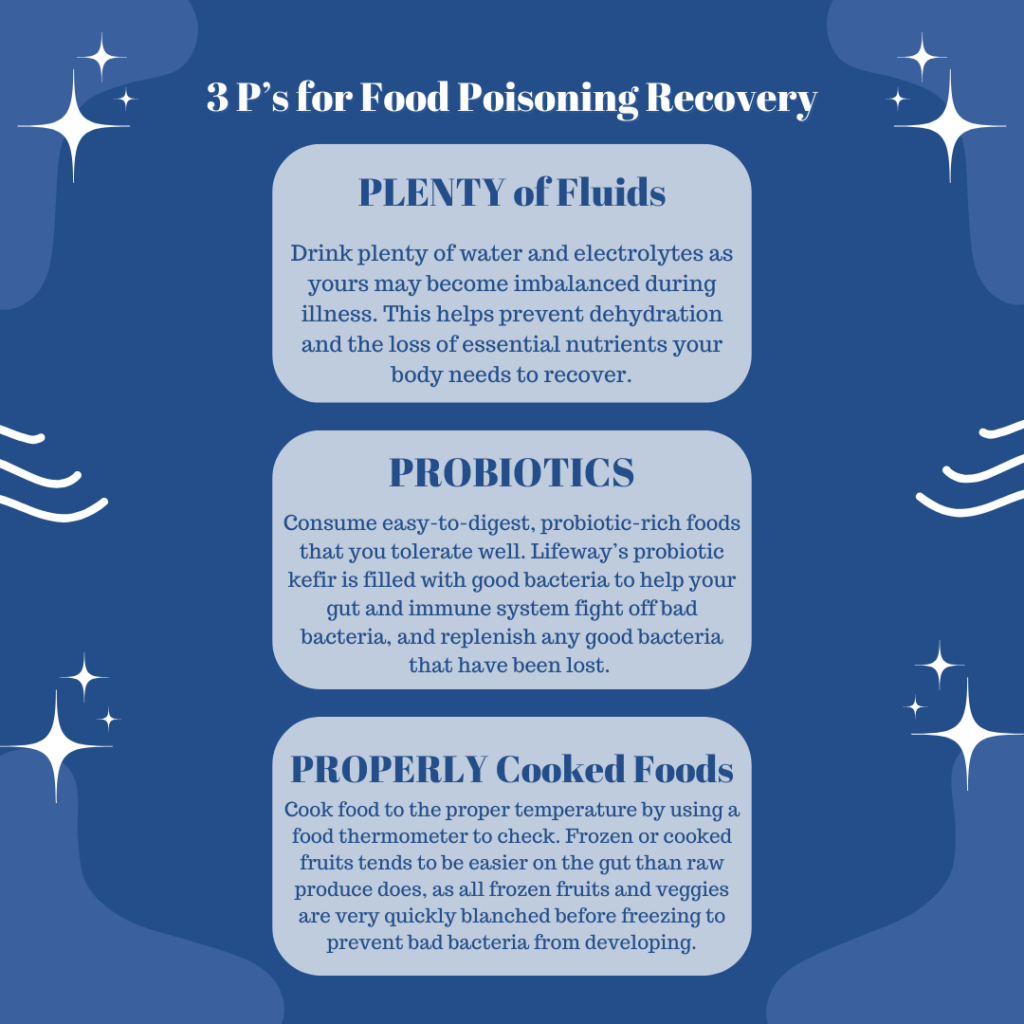Food safety is of great importance during this time of year when homemade treats, leftovers, and holiday dinners can be subject to improper food safety protocols. There also seems to be a new weekly headline announcing another recall or food poisoning occurrence with big and small companies everywhere. With so many potential triggers on the rise for food poisoning, we want to help you stay up to date on important food safety steps you can easily take at home and share what foods you’ll want to keep around so you can recover quickly should you ever develop food poisoning at any time.

Food Poisoning 101: What is It and How to Prevent It:
First, what is food poisoning? It’s defined by someone consuming a food or drink that has been left at improper temperatures or has undergone handling that causes that food or beverage to develop dangerous levels of bacteria. This bacteria is invisible at eye level, and often it has no odor and is tasteless. When consumed by individuals, that bacteria causes the person to become ill within hours to sometimes within a few days of consumption. Food poisoning can be caused by something as common as leaving meat, cooked foods, or fresh foods at room temperature for too long, not refrigerating them at proper temperatures, or by preparation techniques such as improper cleaning and handling.
The USDA gives four important steps to remember when it comes to food safety:
- Clean—Wash hands and surfaces often with warm soapy water and hand dry properly before you touch any food for preparation.
- Separate—Don’t cross-contaminate (no meat, poultry, etc. on the same cutting boards as fresh veggies or fruit).
- Cook—Cook to proper temperatures, checking with a food thermometer (see this chart).
- Chill—Refrigerate promptly (anything above 40 degrees, Fahrenheit is considered the danger zone for refrigerated goods).
For a complete rundown of temps and charts to keep on hand for food safety protocol, visit the USDA’s Food Safety page here.
Now, let’s talk about what to do if you do get sick.

How to Recover Quickly After Food Poisoning
As soon you as you realize you have food poisoning, take action to help yourself recover. If you feel you need to visit the emergency room or see a doctor, please do so immediately. It’s hard to know what type of food poisoning you have unless you see a professional and now might not be the time to test your limits. If you choose to recover on your own, remember, you’ll want to take care of yourself and give your body time to recuperate.

Keep these 3 P’s in mind to recover quickly after food poisoning: Plenty (of fluids), Probiotics, and Properly (cooked foods).
- Plenty of fluids – consume plenty of water and electrolytes or electrolyte beverages since yours may become imbalanced during illness. This helps prevent dehydration and the loss of essential nutrients your body needs to recover.
- Probiotics. Consume easy-to-digest probiotic-rich foods that you tolerate well. Lifeway kefir is a fantastic option! Our probiotic kefir is filled with good bacteria to help your gut and immune system fight the bad bacteria you’ve come in contact with, and replenish any good bacteria that has been lost. It’s also perfect for individuals who don’t tolerate lactose since our kefir is up to 99% lactose-free. Kefir is one of the top foods recommended by health professionals to consume after food poisoning due to its incredible gut-supportive and immune-supportive benefits. Lifeway Kefir is also a great source of bioavailable nutrients, such as protein, calcium and vitamin D, that are important for proper nutrition and recovery. Check out all our recipes here for ideas on how you can use it!
- Properly cooked food. Be sure to consume cooked foods that are cooked to appropriate temperatures for the next 24-48 hours. Now probably isn’t the time to eat that healthy raw kale salad you love or the medium-rare piece of steak you’re craving. Eat easy-to-digest foods that are well-cooked like cooked carrots, rice, sweet potatoes, oatmeal, cooked zucchini, green beans, or other well-steamed veggies. Try to eat simple foods without too many spices or seasonings that might irritate your stomach. If you tolerate fruit well, choose frozen fruit or canned fruits (i.e. applesauce). Try our frozen fruit kefir smoothie or these tummy-friendly Pineapple Popsicles. Frozen or cooked fruits tends to be easier on the gut than raw produce does. Plus, all frozen fruits and veggies are very quickly blanched before freezing to prevent bad bacteria from developing, so choose frozen at the time if you have the option to do so and don’t feel much like cooking.
For more resources of food safety tips and food poisoning prevention, check out the USDA’s website here. Stay safe out there!